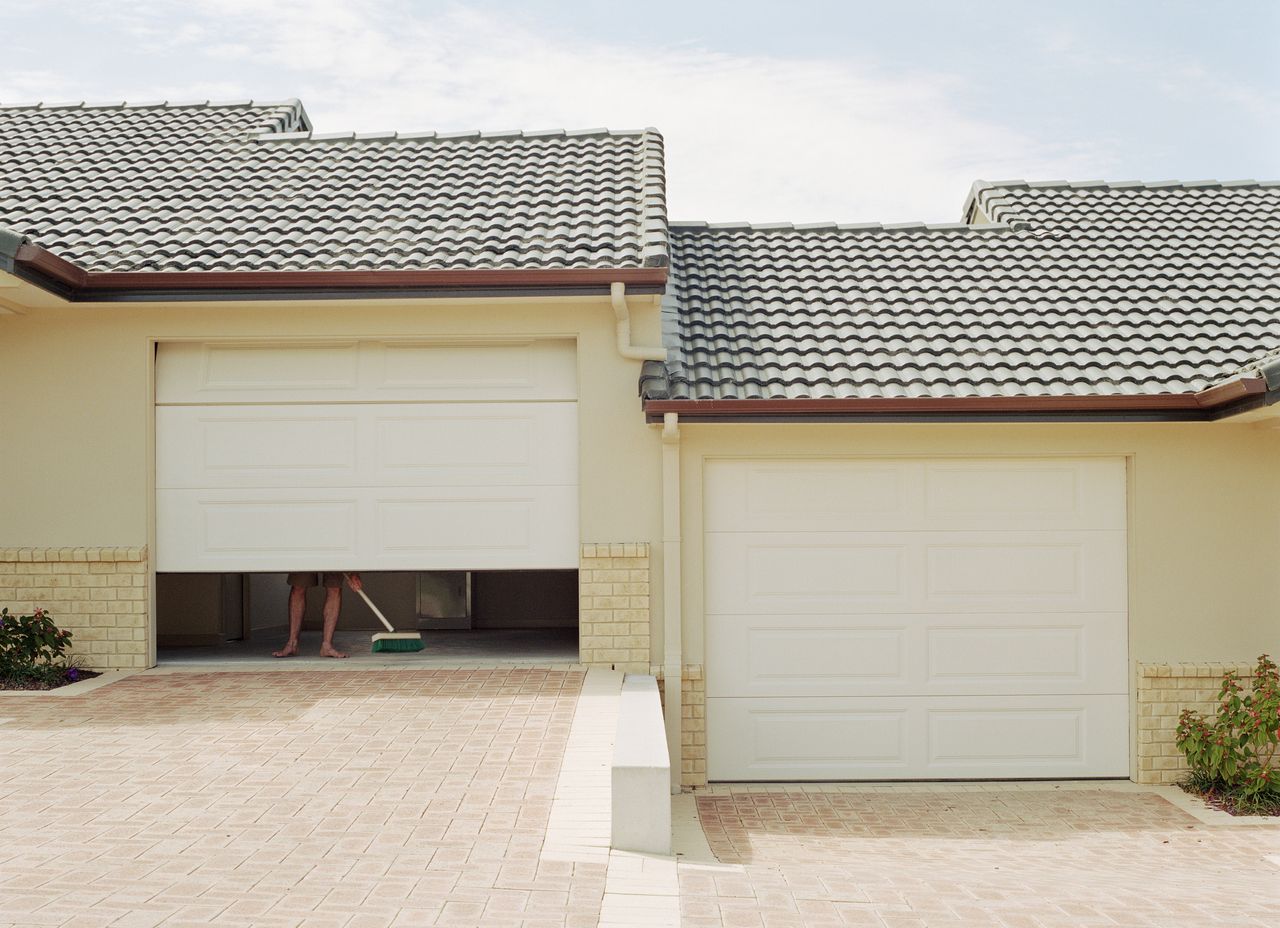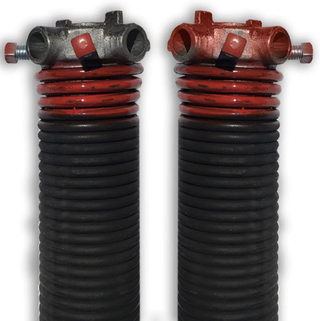

If it’s a struggle to get in and out of your garage, then it's like that your garage door springs need replacing. The door will become heavy, (basically un-liftable) and that's after you've most probably heard one of the loudest sounds known to humanity – a tension spring snapping. But, knowing exactly how to replace a garage door spring isn't exactly part of everyone's DIY repertoire and it's a pretty specialist job to take on yourself. But, it can be done, it mainly depends on what you're working with.
These garage opening mechanisms have to work hard, so it’s no surprise that over time they wear out. So if you need to add this to list of other garage door repairs you might be asking if it’s a job you can take on yourself, or whether you need a contractor?

Can I replace a garage door spring myself?
You can replace a garage door spring yourself but you need to be aware that this is a job for an advanced DIYer with garage door know-how. You’ll need to set aside time, and you will need the right equipment. Bear in mind that there are potential dangers.
Our advice? Familiarize yourself with the cost of replacing garage door springs yourself or with a contractor, as well as the tools needed and what the job entails. And, if it’s not the project for you, call in a professional.
- Planning a garage conversion too?
Can I repair a garage door spring?
Generally, rather than repair of a garage door spring, it’s replacement that’s necessary. How will you know? If a spring snapped, you might hear it, but it could be that the door is really heavy for you or the opener to lift, or moves unevenly. Alternatively, the door might not open at all, or gets stuck a little way open.
However, sometimes it’s balancing of the door and spring lubrication that’s required, and a garage door professional can advise if this is the case.
The different types of garage door spring
The first thing you need to be aware of is that there are different types of garage door springs. The main categories are extension and torsion with different versions of both types within the categories.
Extension springs run parallel to each of the horizontal door tracks. They’re long and thin and they stretch when the door is moved. A door with extension springs will also have pulleys and cables, including safety cables. If your door doesn’t have safety cables, it’s vital these are installed along with new springs.
Torsion springs are located horizontally on a metal shaft just above the door opening with aluminum drums at either end. There may be one or more torsion spring as this depends on the door’s dimensions and weight. Garage doors with torsion springs also use pulleys and cables.
‘Torsion springs have become the standard spring for almost every garage door, especially in any newer homes,’ explains Dave Krzyzak, owner of Palm Valley Garage Doors. ‘Usually, when you hire an expert to replace a spring they will replace it with a torsion. Torsion springs are the safest and they are designed in a way that makes sure the garage door lifts evenly no matter how out of balance it is.’
How are garage door extension springs replaced?
Of the two types of garage door spring, extension springs are the easier to replace. But, bear in mind that there are still potential safety hazards if you were to replace them, not least that of a falling door.
When new extension springs are fitted, the garage door is opened fully and secured so it stays that way using C-clamps on both door tracks. Any garage door opener is also disconnected.
After that, the spring is disconnected from the track bracket and the spring pulley, and the safety cable disconnected from the bracket and the old spring removed.
Then the new spring is installed, and the pulley re-installed with the safety cable reconnected.
How are garage door torsion spring replaced?
Torsion springs are replaced with the garage door closed and held in position with C-clamps. As with extension springs, any garage door opener is disconnected.
To unload the springs, a winding bar is inserted into the winding cone, and the tension released from the springs. After this the springs are disconnected, followed by disconnection of the lift cables. New springs are next attached and the lift cables re-attached.
After this the torsion springs have to be loaded using winding bars and the springs anchored.
Can I replace just one garage door spring?
You can replace just one garage door spring at a time. However, if one of them has reached the end of its life, you may think it likely that the other is near it unless you know that a single spring was replaced previously. One visit from a professional rather than waiting for a second spring to fail and bringing them back a short time afterwards can also prove a time and money saver overall.
It’s also important that a garage door is balanced so a pair of new extension springs makes sense for this point of view, too. When it comes to torsion springs and your door has more than one, a professional contractor will ensure the door is balanced and can advise on whether you can combine an old and new spring.
The lifespan of garage door springs is measured in cycles: when the door goes up and down once, that’s a cycle. Standard springs have a 10,000 cycle lifespan, so you can see that how often you need to raise and lower the door daily will affect the number of years of service you can expect from a spring.
How much does it cost to replace a spring on a garage door?
If you have the skills and experience for DIY spring replacement and are buying the springs yourself, they can cost from around $20 for a pair of extension springs although it does depend on the type; a single spring may cost more than $100. Extension springs are color coded according to the weight they can lift, so it’s important to select the correct springs.
Expect to pay from around $30 for a torsion spring up to around $100 for a pair. Again, it’s vital to buy the correct type and size and, with torsion springs, orientation.
In the UK, count on paying from around £20 for a single extension spring and from around £115 for a torsion spring.
If you are calling in a pro, it’s preferable that they provide the materials as part of the job.
‘When it comes to cost every type of spring is evenly priced; however the cost can change significantly from installer to installer,’ says Dave Krzyzak. ‘Before you hire a garage door installer shop around and make a few phone calls. This will ensure you get the spring installation done at the best price.’
For professional spring replacement, you might expect to pay around $200 for labor and materials if the job involves extension springs, and $300 for torsion springs. In the UK, count on paying around £60 to £100, depending on the spring type for replacement.
Join our newsletter
Get small space home decor ideas, celeb inspiration, DIY tips and more, straight to your inbox!

Sarah is a freelance journalist and editor writing for websites, national newspapers, and magazines. She’s spent most of her journalistic career specialising in homes – long enough to see fridges become smart, decorating fashions embrace both minimalism and maximalism, and interiors that blur the indoor/outdoor link become a must-have. She loves testing the latest home appliances, revealing the trends in furnishings and fittings for every room, and investigating the benefits, costs and practicalities of home improvement. It's no big surprise that she likes to put what she writes about into practice, and is a serial house revamper. For Realhomes.com, Sarah reviews coffee machines and vacuum cleaners, taking them through their paces at home to give us an honest, real life review and comparison of every model.

